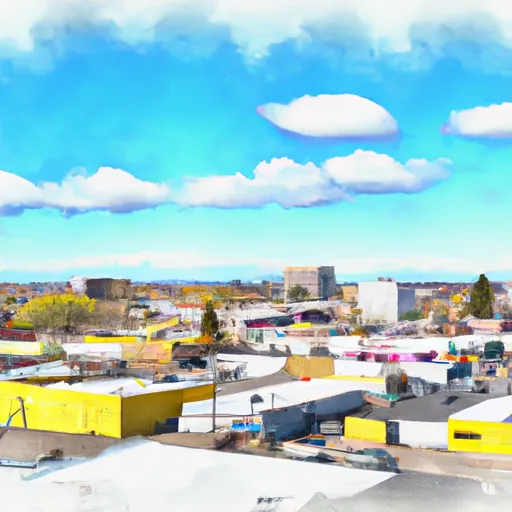-
 Snoflo Premium
Snoflo Premium
Get unlimited access to all our content
With no Ad interruptions! - Start Your Free Trial Login with existing account
Wapato
Eden Index
Climate
8.6
•
Recreation
4.9
•
Community
1.5
•
Safeguard
5.5/10

Wapato, Washington is a small city located in Yakima County in the central part of the state. The climate in Wapato is classified as semi-arid, with hot summers and cold winters. Summers are dry and sunny with average temperatures ranging from the mid-80s to mid-90s Fahrenheit, while winters can be cold with temperatures dropping to the 20s and occasional snowfall.
Wapato is situated near the Yakima River, which provides a significant source of water for the region. The hydrology constituents in the area include irrigation ditches, canals, and drainage systems that support agriculture, primarily the cultivation of fruits such as apples, cherries, and pears.
Outdoor recreation opportunities in Wapato are abundant. The nearby Yakima River offers opportunities for fishing, boating, and kayaking. The surrounding countryside provides hiking and camping opportunities, with scenic trails and camping grounds. Wapato also hosts an annual Cherry Festival, celebrating its rich cherry-growing heritage, featuring live music, food vendors, and various family-friendly activities.
In summary, Wapato, Washington, experiences a semi-arid climate with hot summers and cold winters. The hydrology constituents mainly revolve around agriculture and the Yakima River. Outdoor enthusiasts can enjoy a range of activities, including fishing, boating, hiking, camping, and participating in the annual Cherry Festival.
What is the Eden Index?
The Snoflo Eden Index serves as a comprehensive rating system for regions, evaluating their desirability through a holistic assessment of climate health, outdoor recreation opportunities, and natural disaster risk, acknowledging the profound impact of these factors on livability and well-being.
Climate Health Indicator (CHI): 8.6
Wapato receives approximately
207mm of rain per year,
with humidity levels near 72%
and air temperatures averaging around
11°C.
Wapato has a plant hardyness factor of
6, meaning
plants and agriculture in this region thrive during a short period during spring and early summer. Most
plants will die off during the colder winter months.
By considering the ideal temperature range, reliable water supplies, clean air, and stable seasonal rain or snowpacks, the Climate Health Indicator (CHI) underscores the significance of a healthy climate as the foundation for quality living.
A healthy climate is paramount for ensuring a high quality of life and livability in a region, fostering both physical well-being and environmental harmony. This can be characterized by ideal temperatures, reliable access to water supplies, clean air, and consistent seasonal rain or snowpacks.
Weather Forecast
Streamflow Conditions
Yakima
Area Rivers
Yakima
Snowpack Depths
Yakima
Reservoir Storage Capacity
Yakima
Groundwater Levels
Recreational Opportunity Index (ROI): 4.9
The Recreational Opportunity Index (ROI) recognizes the value of outdoor recreational options, such as parks, hiking trails, camping sites, and fishing spots, while acknowledging that climate plays a pivotal role in ensuring the comfort and consistency of these experiences.
Access to outdoor recreational opportunities, encompassing activities such as parks, hiking, camping, and fishing, is crucial for overall well-being, and the climate plays a pivotal role in enabling and enhancing these experiences, ensuring that individuals can engage in nature-based activities comfortably and consistently.
Camping Areas
| Campground | Campsites | Reservations | Toilets | Showers | Elevation |
|---|---|---|---|---|---|
| Big Pines - Yakima River Canyon | None | 1,258 ft | |||
| Yakima Sportsman State Park | None | 1,005 ft | |||
| Roza - Yakima River Canyon | None | 1,248 ft | |||
| Lmuma Creek - Yakima River Canyon | None | 1,274 ft | |||
| Umtanum - Yakima River Canyon | None | 1,386 ft |
Nearby Ski Areas
Catastrophe Safeguard Index (CSI):
The Catastrophe Safeguard Index (CSI) recognizes that natural disaster risk, encompassing floods, fires, hurricanes, and tornadoes, can drastically affect safety and the overall appeal of an area.
The level of natural disaster risk in a region significantly affects safety and the overall livability, with climate change amplifying these risks by potentially increasing the frequency and intensity of events like floods, fires, hurricanes, and tornadoes, thereby posing substantial challenges to community resilience and well-being.
Community Resilience Indicator (CRI): 1.5
The Community Resilience Indicator (CRI) recognizes that education, healthcare, and socioeconomics are crucial to the well-being of a region. The CRI acknowledges the profound impact of these elements on residents' overall quality of life. By evaluating educational resources, healthcare accessibility, and economic inclusivity, the index captures the essential aspects that contribute to a thriving community, fostering resident satisfaction, equity, and social cohesion.

